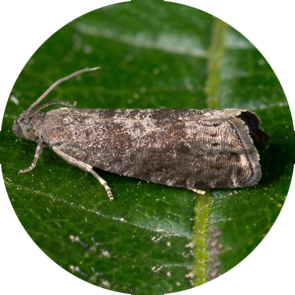


| Latin Name | Grapholita funebrana |
| Common Name | Plum fruit moth |
| Biology | Adult moths are active at night and lay eggs on the undersides of plum tree leaves or on fruits. The larvae bore into plum fruits, forming tunnels within the fruits; the infested fruits either drop prematurely or turn red early. They produce 2-3 generations per year, overwintering as mature larvae by spinning cocoons in the soil. |
| Damage | This pest primarily damages plum trees but can also harm apricot and cherry trees. |
| Distribution Regions | Europe |
| Monitoring | Pheromone lures mimic natural sex pheromones to attract male insects into specialized traps for population monitoring and suppression. As a core IPM component, monitoring enables early risk detection and targeted control. Mass trapping reduces mating opportunities to curb offspring populations. Protocols: ●Use only with matched traps. ●15-45 traps/hectare,replace/replenish every 4-6 weeks. ●Wear gloves or wash hands with detergent when switching lure types. ●Refer to trap-specific hanging instructions. |
| Recommended Traps | Delta Trap, Wing Trap |

Comparta su información de contacto para recibir soluciones de feromonas de precisión. En caso de que nuestra cartera existente no se adapte de forma óptima, nuestro equipo de química sintética iniciará el desarrollo personalizado, desde el diseño de la estructura molecular hasta la producción a escala.